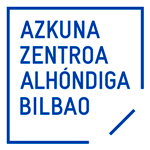
Gijón, 1965. PhD in Hispanic Philology at the Autonoma University of Madrid, she was a visiting lecturer at the University of Michigan and worked as a researcher at the Unit of Biographical Studies at the University of Barcelona.
he received the Casa de las Americas Essay Award in 1994. She has worked in the editorial sector and has collaborated with different channels. She gives a workshop on Creative Writing in the Master’s Degree of Humanities at the UAM (Autonoma University of Madrid for its acronym in Spanish).
She is the author of the book of short stories A tragos and of the novels Déjenme dormir en paz (Ministry of Culture grant for creation), Por eso envejecemos tan deprisa, En el fondo and Una noche en Amalfi. This latest is translated into Italian by Edizioni E/O. Her last book is El desconcierto.
Share:
La manía de entender (The fixation with understanding)
La manía de entender is a nod towards the philosophical poem De rerum natura (1st century B.C.) that the Roman poet Lucrecio wrote to address the cycles of life and death from a scientific perspective, encouraged by the idea that knowledge is the best antidote against fear. Set in a single location and with a reduced group of characters, my novel functions as a metaphor of a vital state from which to explore the topic of identity, the duality of mind/body, insecurity, and self-delusion.
Writing is always crossing out, correcting. Quite often, like someone who sculpts from a block of stone, it entails taking away. In this case, the writing process in itself became an independent piece. Inside and out of the text I am interested in exploring the mix of genres and disciplines, in this sense, the intervened pages from a first draft reflect that determination to analyse, that attempt – so often frustrated – to see.
Intuition crosses out what reason had dictated, and in that void is precisely where the truth can barely be discerned. Also, the notes on the papers are a chiaroscuro where the area of the shade is deduced, the banality is bothersome. In essence, it means facing that “fixation with understanding” by adding a more intuitive and sensorial perspective to the analytical thought.
I arrived at Rome with a first draft of the novel that I couldn’t use, but that I couldn’t just let go of either. I felt that I had put myself in a mould that was too rigid, in a stereotype narration that didn’t dive deeper than the surface. It could be useful as a literary exercise, but my determination was to go beyond and really understand why I had focused the topic like that and what that meant. I began writing a second draft upon arrival, alternating my writing with making the space of my room mine, the space of the Academy, getting to know my colleagues, walking through the neighbourhood and the city. I went to museums, I attended concerts, I spoke with people from different disciplines, I walked a lot. After one month, I took that first draft out of its folder, and just looked at it. I chose some of the pages that I had suffered the most when correcting them (they had many sentences crossed out with a red pen, exclamations marks that laughed at complete paragraphs) and, on the stairs of the garden, I painted them black with synthetic enamel. All of a sudden, the concept of useful was disrupted. Pages that hadn’t served, now had a double purpose: on one hand, to know what I didn’t want to do, and on the other, they had become a visual work, a metaphor of my – frustrated – determination to understand.
It was just what I had been looking for, for my novel: to try and distance myself from analytical thought, to not make everything intellectual and to give more leeway to the sensorial and to intuition, because the mould of “what should be” hadn’t worked. This process wouldn’t have developed that way had I not been here: Firstly, due to the avalanche of stimuli, the monuments, museums, streets, like those that I received upon opening my own balcony every morning, the light, and the colour of the walls of the Academy, the sky over the garden or the shadows that the sun made on the papers of my worktable. Secondly, due to the living arrangements and sharing space with artists from other disciplines that stimulated me with very useful input, from the suggestion to try paraffin with the sheets of paper upon borrowing different types of paint or the references for lecture. Also, the stay at the Academy allowed me to see works and authors beyond the field of literature and serve as a reference and as a stimulus for my work: le cancellature by Emilio Isgro or the auto-censored writings of Concha Jerez.
In parallel to this exploration of the plastics, writing the novel followed its course. But when I newly sat in front of my computer, my disposition was different. It was easier to let myself go and follow the flow of things, to break the rigid mould of a classic tale and to explore with lines that were closer to poetry. I believe that the novel has become more prominent and interesting, because, within it, there is an established dialogue with that first draft, in a twist that alludes to the title: that fixation with understanding and all that it entails. My writing has shifted into what one may call an expanded novel as I feel that here, many expressive possibilities have been opened that I feel like exploring.
